NASHVILLE — For a 2-mile move by truck to a railhead on city streets, Nashville, Chattanooga & St. Louis 4-8-4 No. 576 may have taken one of the smoothest journeys of any major steam locomotive on Sunday.
The 1942 Alco left its home of 66 years, loaded onto a self-propelled 96-wheel transporter that moved at a brisk walk on a flawless trip from Nashville’s Centennial Park to a loading site on the Nashville & Western short line. Utility crews leapfrogged ahead of the locomotive, raising overhead lines to clear the load that stood 19 feet, 8 inches above the pavement. The 175-ton locomotive drew hundreds of people to watch the move over streets blocked off from traffic. Thousands more watched on the Trains Facebook page as the event was broadcast live. The move had been estimated to take between two and four hours, and was completed in slightly more than two hours on a rainy but mild day.
The move ended two years of efforts to prepare and raise money, and a week’s worth of heavy preparation. It also came in just-in-time fashion: A 110-foot turntable from Atlanta’s Tilford Yard donated by CSX Transportation (one of four built for the locomotive and its sisters, and the only one still in existence) arrived Saturday in Watertown, Tenn., where R.J. Corman crews unloaded it and then sent the multi-axle truck to fetch the tender tank in Nashville. The tender followed No. 576 closely down Nashville streets.
Today and Tuesday, crews with the Nashville Steam Preservation Society will work to place the locomotive and tender on live rails and begin running-gear prep work. The engine will then be towed across town on CSX to the Tennessee Central Railway Museum shop, where the $1.5 million, multi-year restoration can commence.





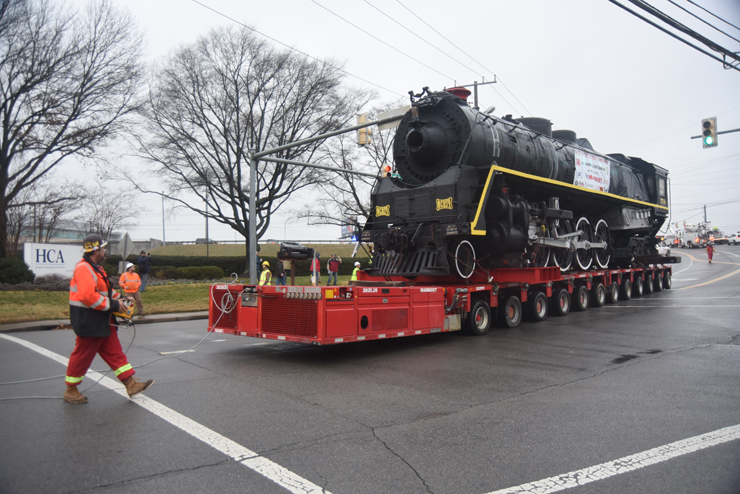
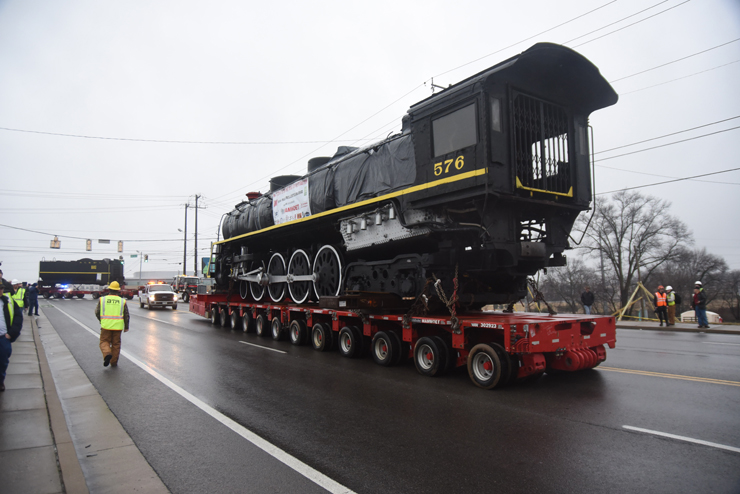
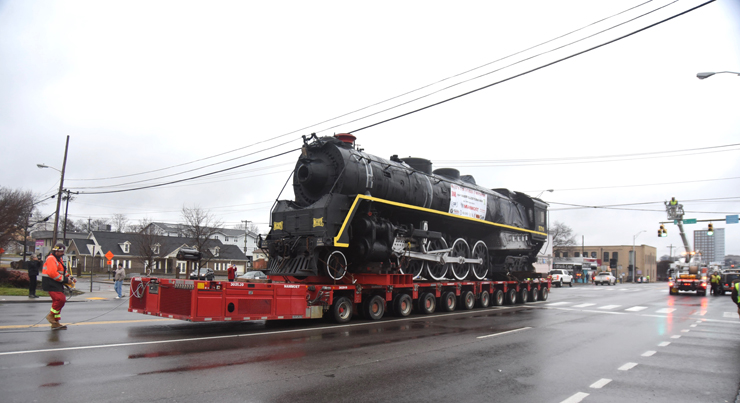

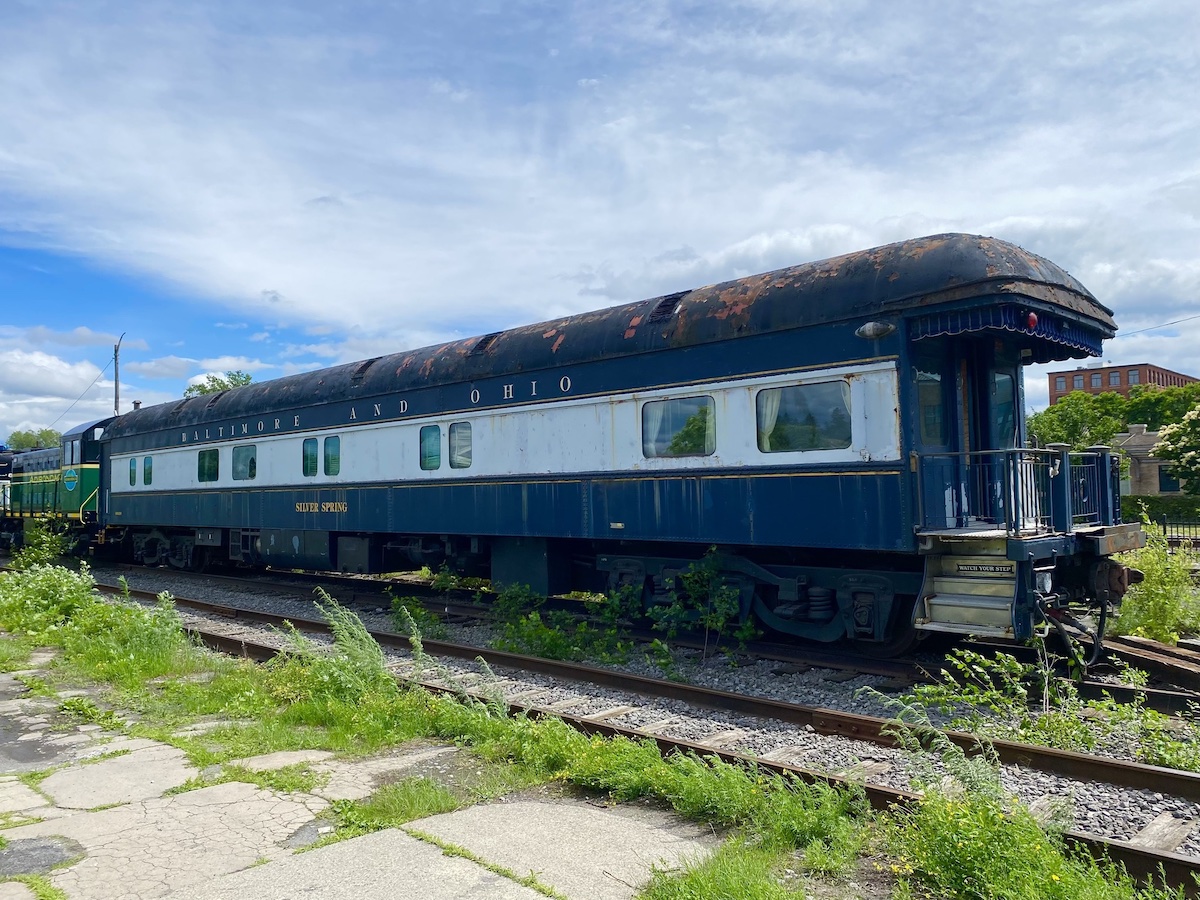
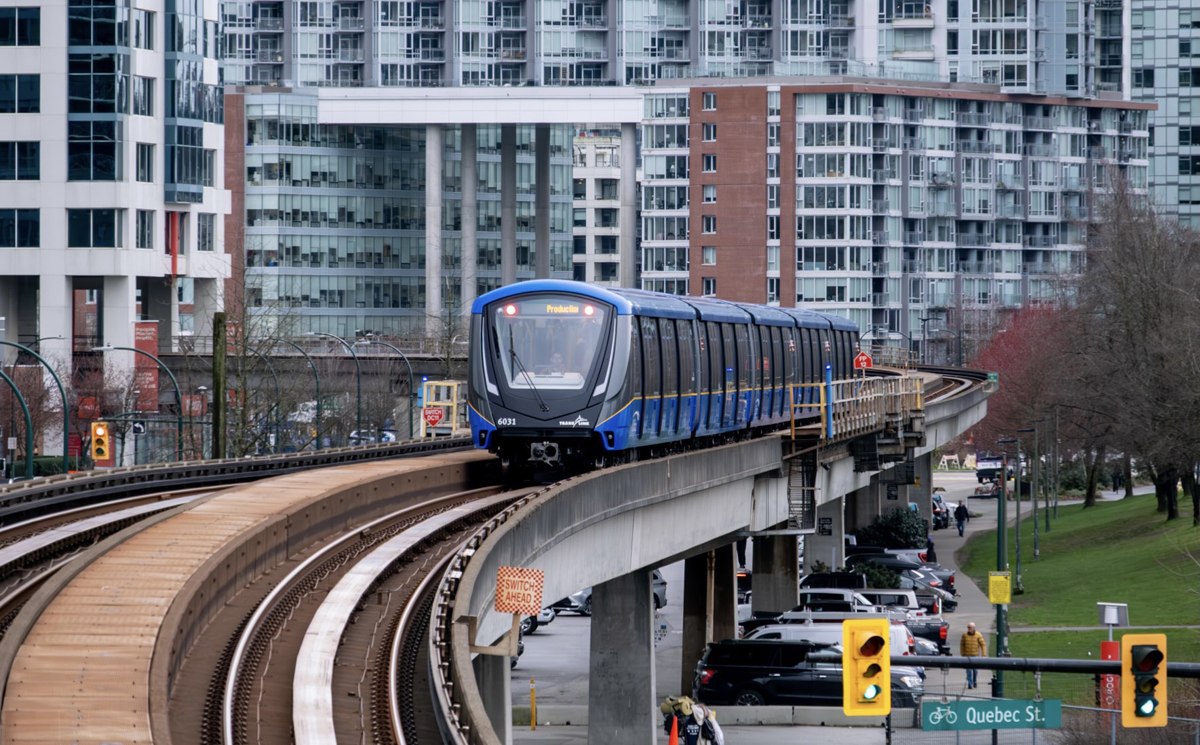
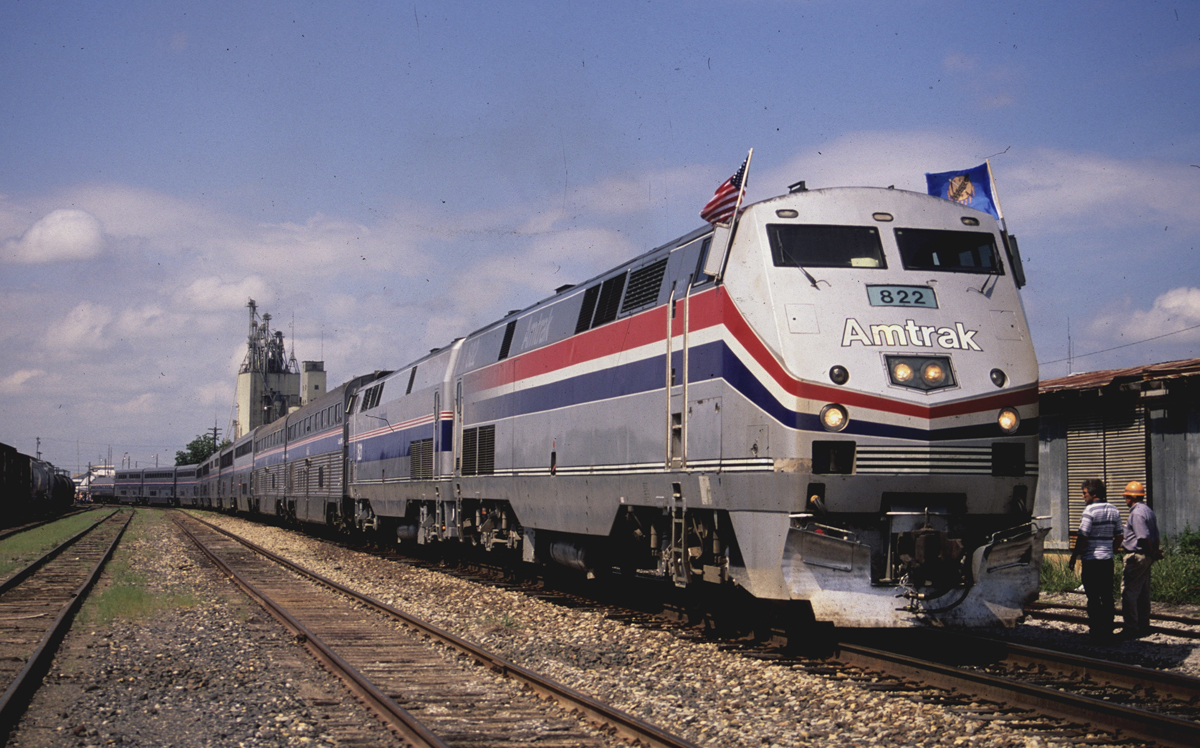
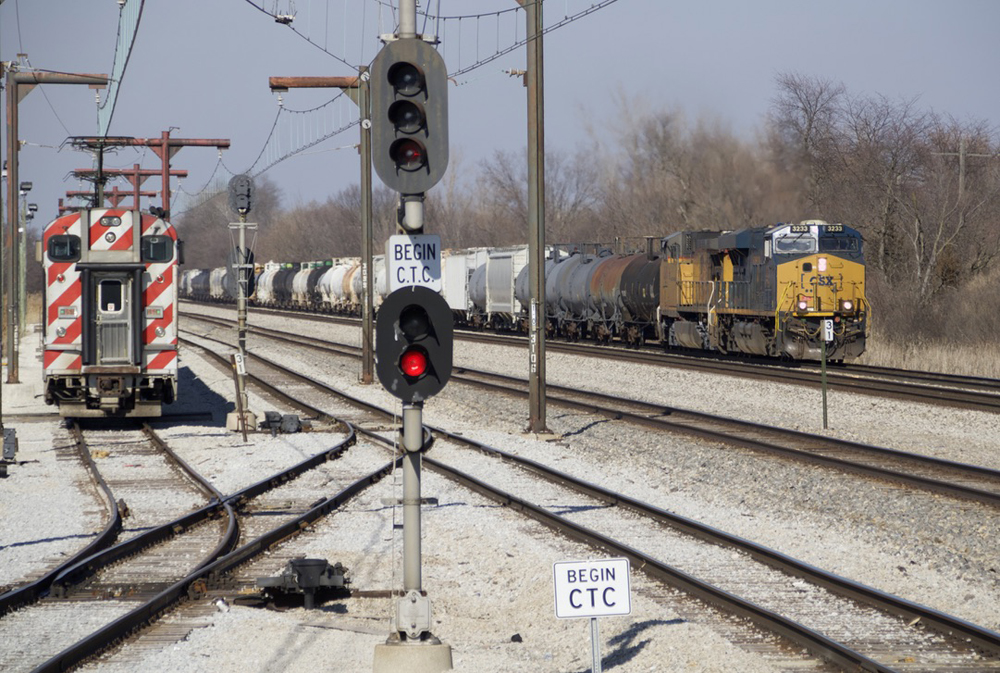




I watched part of the move on Trains Live Feed on Facebook and very interesting to see it moving along. Well-coordinated by all in keeping traffic back and the huge loads moving smoothly along.
Wasn’t there an infamous example of Abraham Lincoln writing the Gettysburg address while “travelling to Gettysburg on the back of an envelope”? Yes, we all know what was intended, but can delight in the ludicrous results of taking the phrasing literally.
Mr. McFarlane – One more response and we’ll have about beaten this thing to death – I agree with you that one more comma might have done it. In my “dated” practice of the English language, a comma signifies a pause after that particular phrase, which was called for. Spoken English would have called for a pause where written English inserted a comma. The (still, hopefully) accepted rules of grammar and sentence construction are still around so my (dated) human brain can gain full comprehension. I’m sensitive to this stuff because I do a fair amount of editing and proofreading for publication. You’d be amazed at what knowledgeable, accomplished professionals can write. One of these days my ilk will have “aged out,” and then I guess anything goes, right dude? Oh yes, put a comma after “dude.”
Mr. McFarlane,
The only reason our brains are “wired properly,” is because our 5th grade teachers taught us proper English grammar and spelling. I cringe every day I listen to or read the improper use of our grammar rules on TV and radio or in newspapers.
I was going northbound on I-55 when a semi pushed me into the medium. I was heading to the hospital for a prostrate exam but the ambulance got me their so it was a mute point. So your comfortable with my use of the language? Then I guess I did good to.
This may sound snarky and mean-spirited, but I don’t mean it that way; I just want to highlight the importance of precise speech. Take a look at the first sentence of the piece. Was the railhead on city streets or was the truck on city streets? Better “For a two mile move on city streets by truck, to a railhead…” ? Go ahead, hate me.
The John H. Emery Rail Heritage Trust
I first saw the Stripe in 1976 and always hoped someday it would be restored to operation. This will be a dream come true. The other fantasy is that it would someday pull excursions from Nashville to Chattanooga and Memphis at track speed on home rails, but that would require visionary leadership at CSX to recognize the value of its history and in so doing foster the immense amount of goodwill for the railroad that gesture would enable.
Tom E. Dailey Foundation
NRHS Heritage Grant Program.
AMAZON SMILE 1/2% raises over $105 million.
This reminds me of being moved on a gurney from my hospital room to surgery last May.
Mr. Pins and Mr. Wayman,
The sentence as constructed makes complete sense, it COULD have used a simple comma, but you’re dating yourself in your practice of the English language…we don’t speak it that way. Besides, the only thing missing was a simple comma…and yes, saying railhead on a city street is correct, but putting the comma before that portion would have made it clearer. However, our human brain is wired to comprehend it properly, which is also the reason people can read a complete paragraph that has every other letter missing in it.
If this doesn’t give you a “warm, fuzzy feeling”, then nothing will. Congratulations to everyone who worked so hard for so long to accomplish this (seemingly impossible) feat!
Mr. Wayman: No, the thought was not clearly understood, thus my picky comment. Even if it was understood, “you know what it means” does not substitute for correct sentence construction. Just ask Miss Stedman, rest her soul, my fifth grade English teacher. Of course we can get along, even when we disagree. It’s PC to be offended by any innocuous slight these days. Miss Stedman wouldn’t go along with that, either.
George, you refer to the sentence that reads, “For a 2-mile move by truck to a railhead on city streets, Nashville, Chattanooga & St. Louis 4-8-4 No. 576 may have taken one of the smoothest journeys of any major steam locomotive on Sunday.” My English teachers would have had problems with the construction but the thought was understood, To much hate in today’s world so I don’t hate you.. .So as Mr. R King said, :”CAN’T WE JUST GET ALONG!”
Do you suggest it should read, For a Sunday 2-mile trip on city streets to a raihead, NC&StL 4-8-4 #576’s truck ride may have been one of the smoothest journeys of any major steam locomotive?